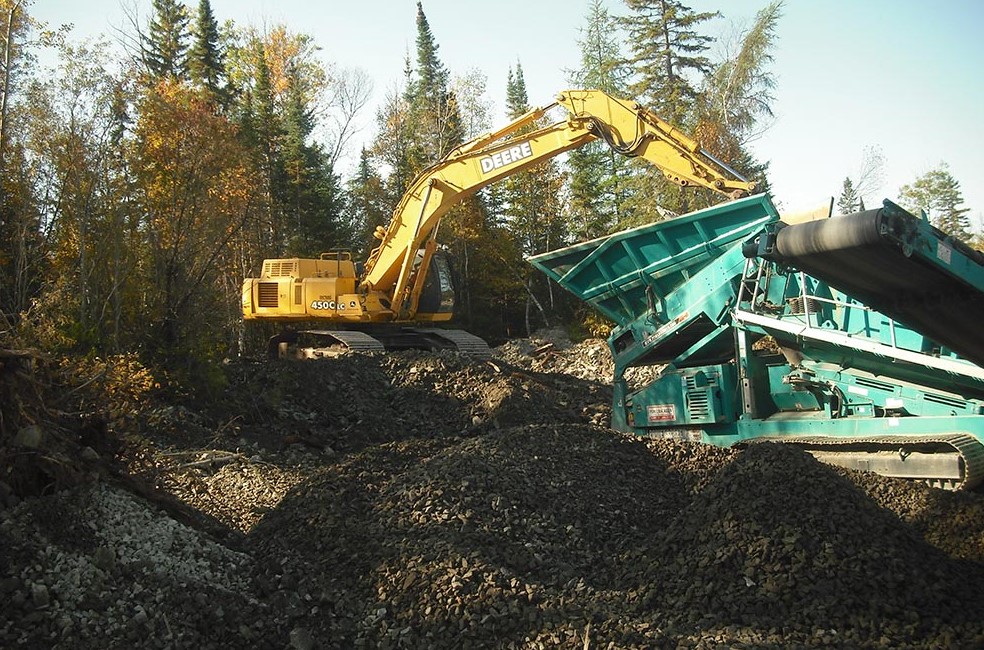Canada Silver Cobalt drills 0.39% nickel over 30.60 metres at Graal, Quebec

Canada Silver Cobalt Works Inc. [CCW-TSXV; CCWOF-OTCQB; 4T9B-FSE] provided an update on exploration activity at its Graal nickel-copper-cobalt discovery in the Lac St-Jean region of Quebec, including the most recent assays results from drill hole NRC-22-24 which intersected 13.1 metres of combined massive sulphides within a 30-metre zone of disseminated and massive sulphides in a new area located five kilometres from the previously reported discovery of massive sulphides.
“The results coming in from the labs for the drill program at Graal continue to be exciting for our geological team. Almost every drill hole has encountered disseminated to massive sulphides with strong nickel, copper and cobalt mineralization. We intend to continue to explore further to determine the full size of this nickel-copper cobalt deposit as it appears to have the potential to become an important supplier of battery metals for the EV market,” stated Matt Halliday, P.Geo., President, COO and VP Exploration.
The drilling campaign with 7,772 metres drilled so far has been paused to allow reception of pending assay data, bore-hole EM data, and the completion of the SQUID Ground Geophysical Survey. The geophysical survey aims to more accurately pinpoint and outline the geophysical conductors as well as identify areas where significant thicknesses are located.
The company previously reported a major discovery of massive sulphides with high-grade nickel, copper and cobalt mineralization along with platinum and palladium in the northwest corner of the property where an airborne geophysical survey had indicated a sizeable gravity anomaly. The first three drill results reported in this location (NRC-21-02-03-04) showed segments up to 2.08% nickel and 3.75% copper. More assays are pending.
In addition, about 5 km southeast, the company also drilled hole NRC-22-24 in a spot that had not yet been drilled along the 6-km conductor continuity where a previous ground geological survey had indicated a gravity anomaly. This drill hole (NRC-22-24) intersected 13.1 metres of combined massive sulphides within 30 metres of disseminated and massive sulphides between 121.5 and 152.1 metres downhole. The other pending assay results will be released once received and validated.
These latest assay results support the previously estimated potential target along the 6-km conductor continuity of near-surface tonnage of 30 to 60 million tonnes at a grade range of 0.60% to 0.80% nickel and 0.30% to 0.50% copper with 0.10% to 0.15% cobalt. This estimation does not take into account any potential at depth which is currently being explored.
Drill hole NRC-22-24 returned 30.60 metres of 0.39% nickel, 0.40% copper and 0.05% cobalt for a nickel equivalent (NiEq) of 0.63%, including 7.70 metres of 0.61% nickel, 0.34% copper and 0.07% cobalt for a NiEq of 0.89%.
| In addition to the holes drilled by Canada Silver Cobalt, there are historical intersections including hole 1279-00-10 drilled by Mines d’Or Virginia Inc. in June 2000 approximately 200 metres south of NRC-22-24. This intersection is not part of the gravity anomaly, yet it still returned 1.15% nickel, 0.56% copper and 0.15% cobalt over 4.5 metres (Source: GM 58815) which suggests the mineralization may be larger than the geophysical anomaly itself. |
In addition, the technical team noted other intervals with disseminated to massive sulfides that have assays pending. These intercepts include but not limited to hole DDH NRC-21-05 that intercepted 7.8 metres of mixed and disseminated sulfides mineralization, beginning at 144.3 metres depth. Hole DDH NRC-21-06 returned 13.4 metres of mixed and massive sulfides mineralization, beginning at 1395.2 metres depth. DDH NRC-21-07 intercepted 1.9 metres of mixed and massive sulfides mineralization, beginning at 167.8 metres depth. DDH NRC-21-08 intercepted 9.1 metres of mixed and massive sulfides mineralization, beginning at 121.0 metres depth.
In addition to diamond drilling, bore-hole EM geophysics surveys was completed on several of the holes that intersected nickel and copper sulfides. The EM survey should assist in targeting the most prospective anomaly within a 100-metre radius from the existing holes. The mineralization remains open in all directions and at depth. The next phase of drilling in 2022 will focus on the areas identified by the SQUID survey.
Canada Silver Cobalt Works recently discovered a major high-grade silver vein system at Castle East located 1.5 km from its 100%-owned, past-producing Castle Mine near Gowganda, northern Ontario.
